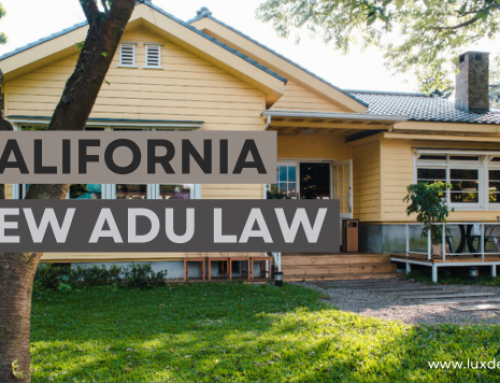Will California pay you to build an ADU?
California’s housing market is constantly evolving, and Accessory Dwelling Units (ADUs) are increasingly important.
But, building an ADU can come with significant upfront costs. To address this issue, the state government has introduced a $40,000 grant specifically to encourage the development of Accessory Dwelling Units (ADUs).
ADUs, often called “granny flats” or “in-law units,” are smaller, secondary housing units built on the same property as a primary residence. These units can provide additional housing options without the need for new land development, helping to alleviate the housing shortage.
The $40,000 grant is designed to help Californians overcome financial barriers to building ADUs. This initiative not only helps homeowners create additional rental income but also contributes to the overall availability of affordable housing in the state.
Contents
- What is the CalHFA Grant Program?
- What is the Purpose and Significance of The Grant?
- How Does the CalHFA ADU Grant Program Work?
- How to Apply for the ADU Grant?
- Are You Eligible For the CalHFA ADU Grant?
- The 5-Step Roadmap for Building your ADU with CalHFA’s Grant
- What Costs Will the Grant Cover?
- Are there any costs that you need to pay upfront?
- What Happens if These Expenses Cost Less Than $40,000?
- What If You Already Paid Out of Pocket for Some Expenses?
- What Happens if You Abandon the Project? Can You Still Get the Grant?
- FAQs
- How can you use the ADU?
- Does the grant work with SB9 California?
- Will the grant money be taxed?
- Turn Your Unused Space Into a Valuable Asset!
What is the CalHFA Grant Program?
The California Housing Finance Agency (CalHFA) offers a $40,000 grant to help homeowners finance the construction of Accessory Dwelling Units (ADUs) on their properties.
ADUs are secondary housing units that can be added to a lot with an existing home. They provide extra living space that can be rented out or used by family members. This initiative aims to ease the housing shortage in California by increasing the number of affordable rental units.
What is the Purpose and Significance of The Grant?
The main purpose of the $40,000 ADU grant is to support the creation of affordable housing in California. The state helps homeowners build ADUs by providing financial assistance.
Providing affordable housing options to the community as well as giving homeowners an extra source of income makes this grant beneficial to both parties. This grant is crucial due to California’s ongoing housing crisis, which needs more affordable and accessible housing solutions.
Keep reading, and we’ll ensure that by the end of this article, you’ll have a thorough understanding of the CalHFA ADU Grant Program and how it can benefit you.
How Does the CalHFA ADU Grant Program Work?
To qualify for the CalHFA ADU Grant Program, you need to secure a construction or renovation loan from one of CalHFA’s pre-approved lenders. The program is designed for homeowners who require financing for their ADU project.
The loan must have a managed escrow, meaning the lender will release funds in phases as the ADU project progresses. The lender will handle this process and guide you through it.
Once your loan is approved, the lender will submit your paperwork to CalHFA. If you qualify for the grant, an additional $40,000 will be added to your loan funds.
Molly Ellis, Training and Outreach Manager at CalHFA, explains, “We will not hand $40,000 to you, that’s not the way the grant works. If you are eligible for the program, we will add $40,000 to your existing financing to make your project whole.”
For instance, if your ADU project costs $200,000, the lender will provide $160,000, and CalHFA will contribute an additional $40,000.
After completing the application, you will have access to:
- $40,000 from CalHFA’s grant for pre-construction costs
- $160,000 from the lender for construction costs
The $40,000 grant from CalHFA does not need to be repaid, while the loan from the lender must be repaid.
How to Apply for the ADU Grant?
The best way to start your application for the CalHFA ADU grant is by consulting with one of the approved lenders listed on CalHFA’s website. The lender will assess your eligibility for the grant and guide you through the process.
CalHFA even designed a 5-step roadmap which can give you a better idea of the process structure.
To be eligible for the grant, you must apply for a loan. The lender will need your architectural drawings or structural plans to assess the value of your ADU and determine the loan amount.
Next, you’ll complete the CalHFA ADU grant application. Once your loan is approved, the project enters the pre-development phase, funded through the construction loan account. Your lender will submit the ADU grant application package to CalHFA, including a list of costs and invoices.
CalHFA will then approve the grant and wire the funds to the loan account, reducing the principal of the ADU construction loan that the homeowner needs to repay.
Are You Eligible For the CalHFA ADU Grant?
Now that we’ve explained how the CalHFA ADU Grant works, let’s address the next crucial question: Who qualifies for this grant?
To be eligible for the CalHFA ADU grant, you must meet two primary requirements:
Need to Live in and Own the Property
- You must own the property where the ADU will be constructed.
- You must live in the primary house on that property.
- As Molly Ellis, Training and Outreach Manager at CalHFA, notes, this grant is strictly for homeowners, not investors. “If you’re an investor building an ADU on your property, it’s great that you’re doing that, but this program isn’t for you.”
Need to Meet the Low-to-Moderate-Income Limits
- The income limits apply to the borrower, not the entire household.
- Income criteria vary by county. For example, the limit is $159,000 for Del Norte and Imperial counties, whereas it can be as high as $300,000 in counties like San Francisco and Santa Clara.
- You can check or contact the contractors for the full list of income limits to see if you qualify.
Meeting these criteria ensures you are on the right path to benefit from the CalHFA ADU grant and take a significant step toward enhancing your property and contributing to California’s housing solutions.
The 5-Step Roadmap for Building your ADU with CalHFA’s Grant
CalHFA has streamlined the entire process of applying for and building an ADU into five distinct phases:
- Application: The homeowner applies for a construction loan with an approved lender and completes the ADU grant application forms.
- Loan Approval: The lender reviews and approves the construction loan, prequalifying the homeowner for the CalHFA ADU grant.
- Pre-Development: Pre-development work begins, funded by the construction loan account. During this phase, the lender submits the ADU grant application to CalHFA, including detailed costs and invoices.
- Grant Disbursement: CalHFA approves the grant and transfers the funds to the loan account.
- Construction: The ADU construction starts, financed through the construction loan.
What Costs Will the Grant Cover?
The funds from the grant are designated specifically for covering pre-construction costs, also known as soft costs. These include:
- Site Preparation: This involves work done on your land before construction begins, such as finalizing location details, gaining access to the site, and managing drainage.
- Architectural Designs: These are the drawings that depict the final appearance of your construction project.
- Permits: These are authorizations issued by your city or county allowing the construction of your ADU.
- Soil Tests: These tests reveal the characteristics, nature, and reactivity of the soil, which can influence construction decisions.
- Impact Fees: This is a one-time fee paid to the municipality to offset the financial impact of the new development on public infrastructure.
- Property Survey: This involves determining and confirming land boundaries and any other restrictions related to the legal description of the property.
- Energy Reports: These reports provide information about the ADU’s energy use, including gas, electricity, or both.
It’s important to note that the grant funds cannot be used for building materials or construction labor, as these are considered construction costs.
Are there any costs that you need to pay upfront?
As mentioned earlier, you will need to provide architectural plans and drawings for your ADU to get loan approval. This means you might have to pay some costs upfront.
Although you’ll cover these costs initially, they will be reimbursed by the grant. Note that the reimbursement won’t be paid directly to you but will instead reduce the principal of your construction loan.
Remember, these upfront costs can sometimes be as high as $20,000.
What Happens if These Expenses Cost Less Than $40,000?
If your pre-development costs are less than $40,000, the remaining funds can be used to cover non-recurring closing costs.
These are one-time expenses, such as loan fees and interest rate buydowns.
What If You Already Paid Out of Pocket for Some Expenses?
If you’ve already paid for some expenses before applying for or receiving the grant, you won’t get a direct reimbursement.
However, you can provide your receipts to your lender, who can then apply the equivalent amount to reduce the principal of your loan.
For example, if you spent $10,000 on permits, your lender can use $10,000 of the grant to lower your loan principal. This way, even though you don’t get the cashback, it reduces the amount you owe on the loan.
What Happens if You Abandon the Project? Can You Still Get the Grant?
Yes, you can still get the grant if you decide to abandon the project.
Be sure to discuss this scenario with your lender before starting the project to understand the implications and process.
FAQs
How can you use the ADU?
After building your ADU, there’s only one restriction: it cannot be used as a short-term rental. Beyond that, you have the flexibility to use it as you wish. You can rent it out long-term, have relatives move in, or use it for personal purposes. The goal of CalHFA’s program is to increase affordable housing options, and all these uses support that objective.
Does the grant work with SB9 California?
No, the CalHFA ADU grant does not apply to SB9 development. SB9 passed in 2021, allows homeowners to add residential units on parcels zoned for single-dwelling units. These units are typically larger than ADUs and are governed by different legislation.
Will the grant money be taxed?
Yes, you will receive a 1099 form for the grant money. CalHFA strongly recommends consulting with your accountant or a tax professional to understand how this may impact your annual taxes.
Turn Your Unused Space Into a Valuable Asset!
We hope this article has helped you determine your eligibility for the CalHFA ADU Grant Program.
If you need assistance with financing your ADU, LUX Construction Group can help. Learn more about ADU costs and financing options to start building your ADU as soon as possible.






